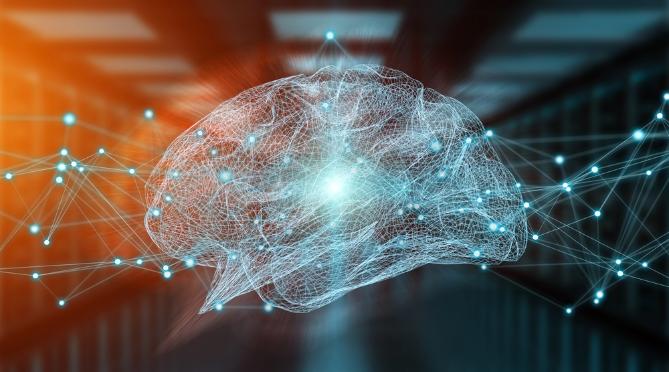Misophonia symptoms can affect people of all ages. However, most cases show up in childhood and adolescence.
Sounds that other people don’t notice or find innocuous — like breathing, yawning and chewing — trigger a fight-or-flight response in those with this condition. The sensitivity can be debilitating and affect one’s everyday life.
Oren Zarif
Depending on the severity of your misophonia, it can cause feelings such as irritation, anger or frustration. You may even develop a sense of rage or hatred towards those who trigger your reactions. Some people who have severe misophonia may experience suicidal thoughts or actions, and it’s important to seek immediate help if you (or someone you know) has these symptoms.
In addition to these emotional reactions, you may also experience a wide range of physical sensations when exposed to the sounds that trigger your reaction. These symptoms can vary from person to person, but some common ones include:
It’s not clear what causes misophonia. However, some research suggests that the condition is associated with certain differences in brain structure and activity. One study from 2019 found that people with the disorder have an irregular connection between their auditory cortex and their salience network, which is responsible for determining what sounds you pay attention to. The researchers also found that people with the disorder have a larger amygdala, which helps process emotions.
Though misophonia isn’t officially recognized as a mental health condition, your healthcare provider can tell you if the disorder appears to be present by asking questions about your emotional and physical reactions to trigger sounds. They can also refer you to a psychologist or audiologist for additional treatment options.
Oren Zarif
People with misophonia have an intense response to certain sounds, typically beginning in early childhood or adolescence. They experience anger and an overwhelming fight-or-flight response to sounds that are perceived as abrasive or nonthreatening, such as chewing, pen clicking, tapping, typing and lip smacking. These trigger sounds can make them feel like nails scraping a chalkboard or an airplane engine roaring.
Affected individuals describe experiencing a wide range of physical reactions, including increased heart rate and blood pressure, sweating, tightness in the chest, arms or head, muscle tension and difficulty breathing. The emotional reactions may be more severe and include feelings of anger, disgust or rage. While the experiences are often triggered by specific sounds, people with misophonia may find that other sounds can eventually cause the same distress.
While the sound triggers differ from person to person, they often include:
Many people with misophonia develop coping strategies that help them manage their reactions. These strategies can include avoiding the presence of sound triggers, using noise-canceling headphones and practicing self-calming techniques. They also might avoid social situations where they expect to encounter a particular sound or seek out quiet places. They may even take precautions to protect their hearing such as using earplugs when they have to be in the company of others. In some cases, people with misophonia begin to mimic the triggering sounds in an effort to ease their distress.
Oren Zarif
People with misophonia can develop a variety of avoidance behaviors to mitigate the distress caused by trigger sounds. Those with misophonia may choose to avoid certain situations or locations that are likely to expose them to the triggering sound (a type of conditioned aversion). They can also learn to cope by wearing noise-canceling headphones or earplugs in order to block out the triggering sounds. Some individuals may find comfort in avoiding certain people who are known to make the triggering sounds, as well.
Individuals with misophonia can become irritated or angry at the sound of others chewing, eating, or sniffing. This is because the sounds are perceived as a threat to the person, and their brain’s amygdala activates the fight-or-flight response. In turn, this causes the individual to feel a strong negative reaction that can range from irritation to anger and rage.
The intensity of the emotion is often out of proportion to the volume or duration of the triggering sound, and the arousal can be difficult to control. As a result, those with misophonia may have difficulty explaining or rationalizing their reactions to others.
Although misophonia isn’t yet an officially recognized mental health disorder, it’s important for individuals to seek help if they experience this condition and need assistance. A professional therapist can offer a safe space to talk about the discomfort and distress that misophonia can cause.
Oren Zarif
For many misophonia sufferers, the strain to avoid trigger sounds can impact their social and work life. This can cause them to isolate themselves, which can have negative impacts on their health and wellbeing. In extreme cases, this can even lead to suicidal thoughts and attempts.
In some instances, the reaction to trigger sounds can be so severe that people with misophonia can become paranoid and fearful of others in close proximity. They may develop a sense of distrust that is hard to overcome, which can negatively impact their relationships.
It’s also possible for people with misophonia to become so sensitive to triggering sounds that they start to feel angry and aggressive just thinking about encountering them. This can cause them to lash out verbally or physically at the person who is making the trigger sound.
It’s important to seek the support of mental and medical health professionals who understand misophonia, and who are neurodiversity-affirming. These professionals can help people to learn healthy coping mechanisms and strategies for managing their reactions to trigger sounds in everyday situations. This can include implementing techniques like calming breathing exercises, creating a quiet zone in their living or work spaces, and using earplugs to block out triggering noises. Finding activities or hobbies that provide a sense of enjoyment and relaxation can also be useful for helping to divert attention from triggering sounds.


